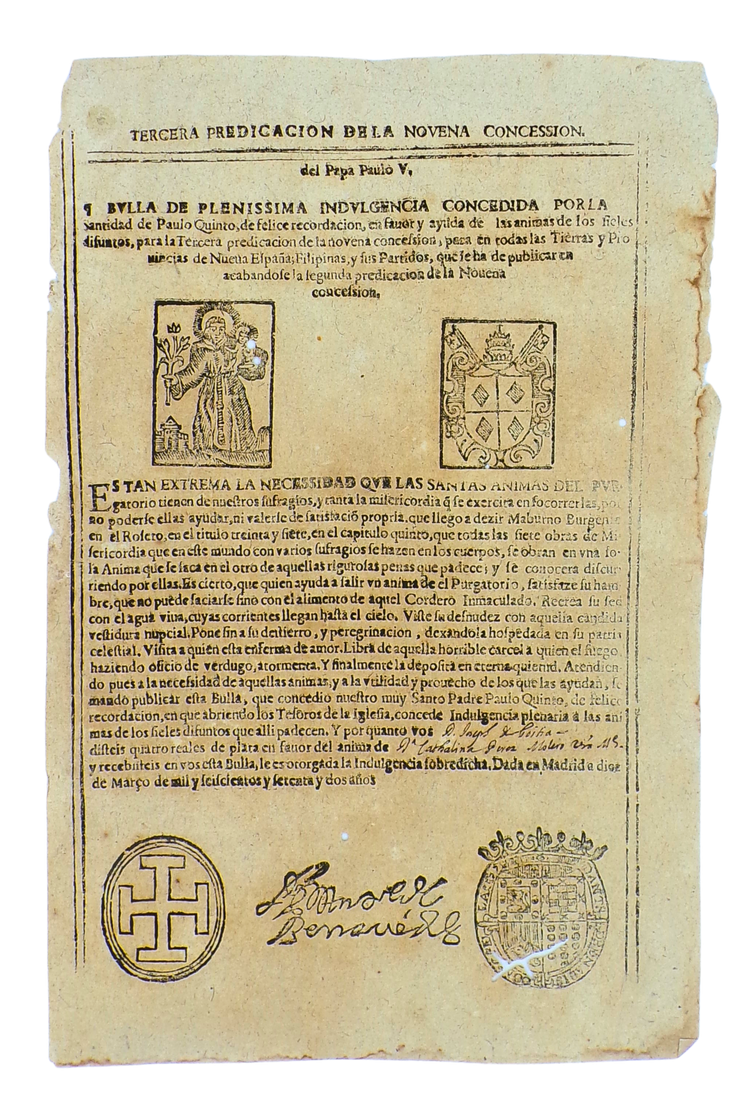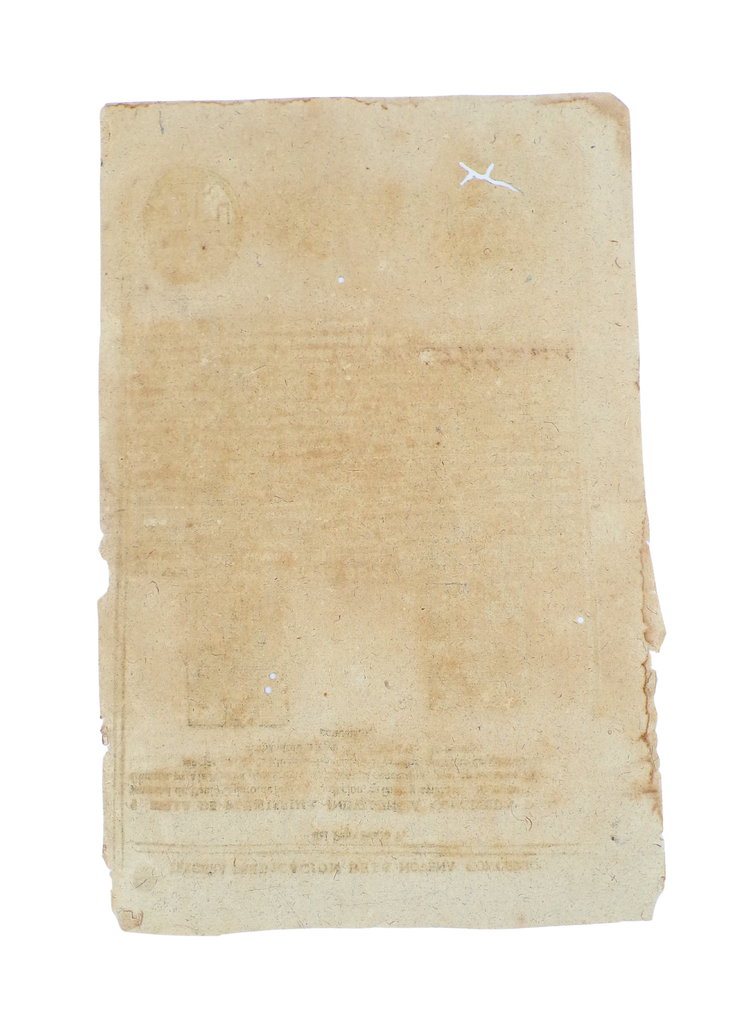Papal bull of indulgence, Mexico 1662.
- Regular price
- €1.900,00 EUR
- Regular price
-
- Sale price
- €1.900,00 EUR
- Unit price
- per
Unrecorded early Papal bull of indulgence, used in Mexico
Pope Paul V (1550-1621).
Tercera predicacion de la novena concession. Del Papa Paulo V. ¶ Bulla de plenissima indulgencia […].
Madrid [issued in Puebla de Los Angeles, Mexico], 1662.
Single sheet, folio (31 x 20 cm.), printed on one side only. No watermark. With five woodcuts: Saint Anthony of Padua; the arms of Pope Paul V; the signature of (?) Benavides; the cross of el Consejo y Comisaría de Cruzada (Council and Commissariat of the Crusade); the arms of the Holy Crusade and Grand Inquisitor. With two names in manuscript filled in at the blanks.
An early and unrecorded broadside Papal bull of indulgence, issued and purchased in Mexico. This bull was specifically directed at the people of the Spanish colonies in the Americas and the Philippines, issued by Pope Paul V. By buying this broadside the soul of a deceased was released from Purgatory and the buyer was granted a plenary indulgence. Spaces in the printed text of the bull were left blank to fill in by hand with the name of the purchaser and the deceased to whom the indulgence was granted. The price for the present copy was four Reales and was bought by Don Joseph de Goitia, a member of the town council of Puebla de los Angeles. He bought it for the soul of Doña Catalina Pérez Molero, who was a wealthy resident of Puebla and owner of a hacienda and sugar refinery named Tenampa in Xalapa. The link between Don Joseph de Goitia and Doña Catalina Pérez Molero was that their families were in business together through her husband Pedro de Yrala.
The manuscript names locate the use of this broadside in Mexico, but it is unsure of it was actually printed there. It lacks an imprint. Officially bulls of the Crusade were only allowed to be printed in Spain and from there copies were shipped to the Spanish colonies (see Benito, 2002). But under circumstances of shortages (i.e. shipwrecks) copies were allowed to be printed in New Spain (see Pilar Martínez López-Cano, 2007). We could not trace any copy of this bull in bibliographies and libraries. Indulgence bulls for the colonies were published since the 16th century and new bulls continued to be published into the 19th century. Early examples are very rare, copies from the 18th century and onwards are now most common.
Recent study of colonial bulls has shown that they had a highly important social function in colonial Mexico. Their publication was celebrated with elaborate festivities. For example, the publication of a bull in 1590 in Puebla was carried out "with the greatest demonstration and solemnity that has been possible, so that it is understood by the natives” (see Pilar Martínez López-Cano, 2007). In addition to a procession, the publication of a bull was accompanied by music, fireworks and street decorations, for which indigenous people from nearby towns came to the capital. Archival records show some of the expenses that were incurred for the publication of a bull in Mexico City in 1639 (perhaps the present one?). Owning a copy of a bull was a socially important achievement and the paper document was likely displayed at the house.
Condition: browned, some pinholes, one worm gallery through the coat of arms, old stain in far right margin.
Literature:
Benito Rodríguez, José Antonio. La bula de Cruzada en Indias, Madrid, Fundación Universitaria Española, 2002
Contreras Calcáneo, Alejandra. “La Bula de la Santa Cruzada en Nueva España: implantación y consecuencias”. In: Antrópica. Revista de Ciencias Sociales y Humanidades, 3, vol. 1, no. 5, 2017, pp. 181-189.
Pilar Martínez López-Cano, María del. “La iglesia, los fieles y la corona: La bula de la Santa Cruzada en Nueva España, 1574-1660”. In: Historia Novohispana, 103, 2017, pp. 59-120.
For Catalina Pérez Molero see:
Terrazas Williams, Danielle. Capitalizing Subjects: Free African-Descended Women of Means in Xalapa, Veracruz during the Long Seventeenth Century, PhD diss. Duke University, 2013, pp. 283-284.
For Joseph de Goitia see:
Rubial García, Antonio. “Puebla -y Querétaro, dos identidades patria” in: Perla Chinchilla (ed.), Procesos de construcción de las identidades de México De la historia nacional a la historia de Ias identidades. Nueva España, siglos xvr-xvm, Mexico City, 2010.
Couldn't load pickup availability
Share


Contact
Email: hugo@artemrarebooks.com
Phone: +31651042297
Visit us on appointment at:
Former US Embassy
Lange Voorhout 102
2514EJ
The Hague (The Netherlands)
Shipping address:
Nannie van Wehlstraat 51
2548MN
The Hague
The Netherlands


